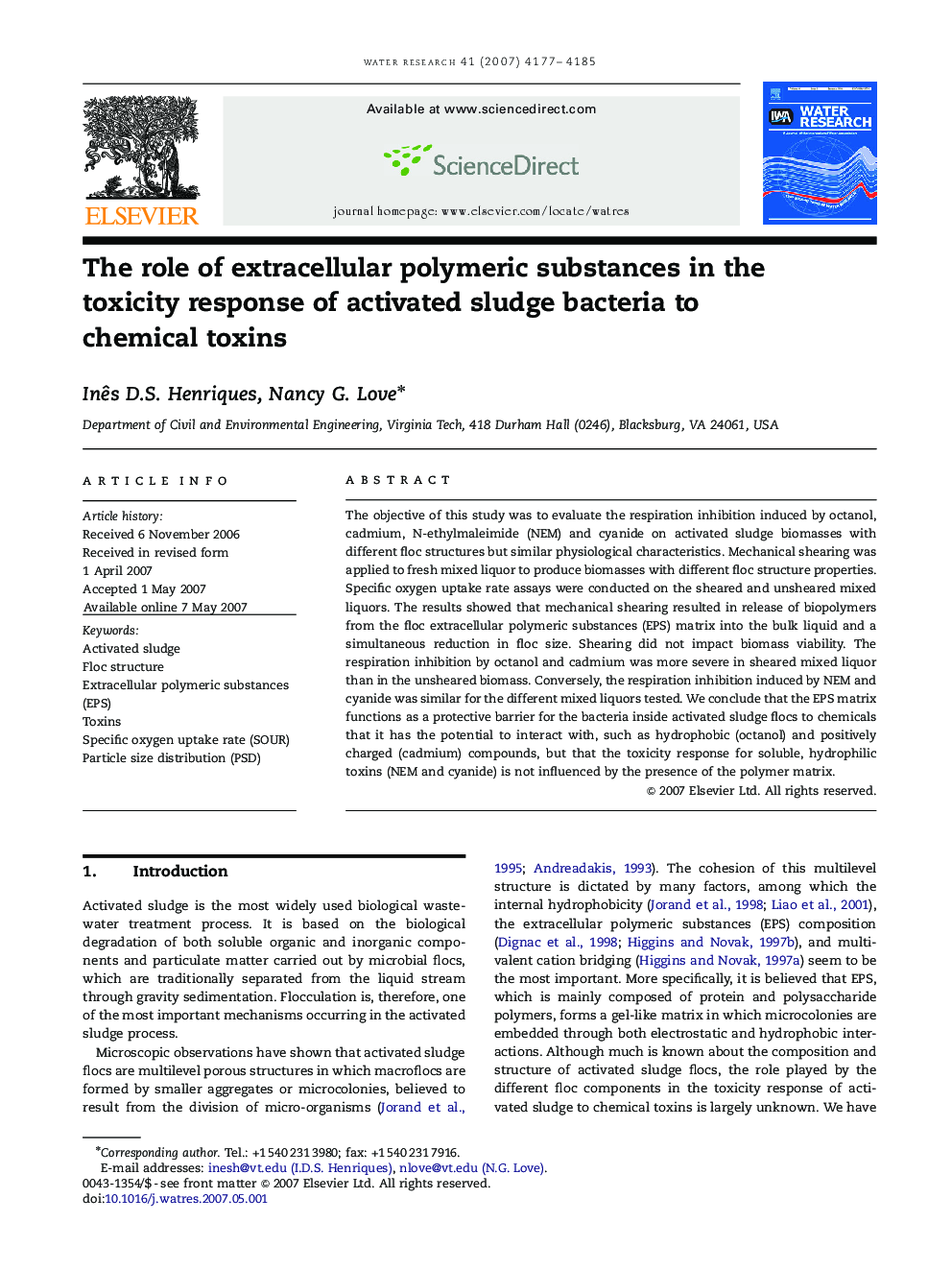| Article ID | Journal | Published Year | Pages | File Type |
|---|---|---|---|---|
| 4485909 | Water Research | 2007 | 9 Pages |
The objective of this study was to evaluate the respiration inhibition induced by octanol, cadmium, N-ethylmaleimide (NEM) and cyanide on activated sludge biomasses with different floc structures but similar physiological characteristics. Mechanical shearing was applied to fresh mixed liquor to produce biomasses with different floc structure properties. Specific oxygen uptake rate assays were conducted on the sheared and unsheared mixed liquors. The results showed that mechanical shearing resulted in release of biopolymers from the floc extracellular polymeric substances (EPS) matrix into the bulk liquid and a simultaneous reduction in floc size. Shearing did not impact biomass viability. The respiration inhibition by octanol and cadmium was more severe in sheared mixed liquor than in the unsheared biomass. Conversely, the respiration inhibition induced by NEM and cyanide was similar for the different mixed liquors tested. We conclude that the EPS matrix functions as a protective barrier for the bacteria inside activated sludge flocs to chemicals that it has the potential to interact with, such as hydrophobic (octanol) and positively charged (cadmium) compounds, but that the toxicity response for soluble, hydrophilic toxins (NEM and cyanide) is not influenced by the presence of the polymer matrix.
